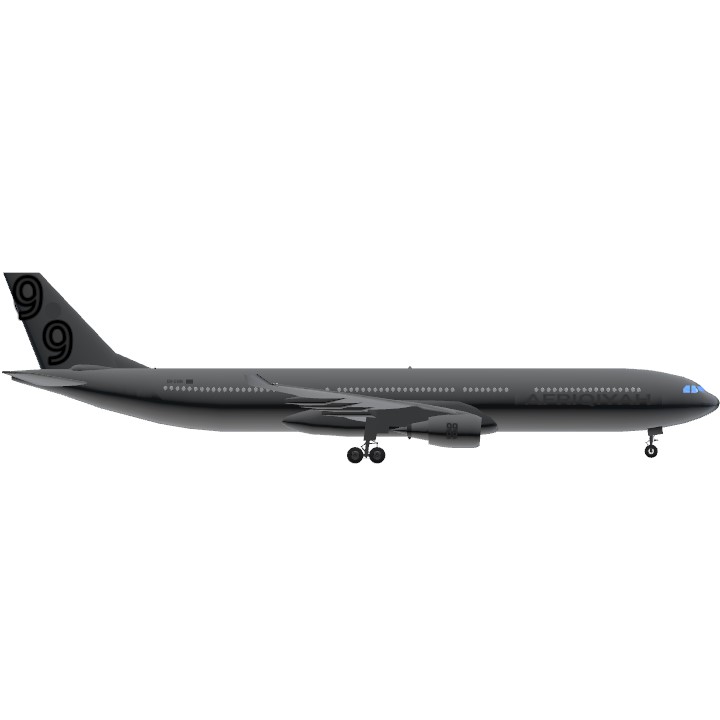ABOUT THE AIRCRAFT:
The Airbus A330 is a wide-body aircraft developed and produced by Airbus. Airbus began developing larger A300 derivatives in the mid-1970s, giving rise to the A330 twinjet as well as the A340 quadjet, and launched both designs alongside with their first orders in June 1987. The A330-300, the first variant, took its maiden flight in November 1992 and entered service with Air Inter in January 1994. The slightly shorter A330-200 variant followed in 1998 with Canada 3000 as the launch operator.
AFRIQIAH AIRWAYS FLIGHT 771:
On route to the locator beacon "TW", the flight crew discussed which runway approach procedure they would use, by the time the landing procedure should have already been chosen. When the landing procedure was selected, the first officer immediately activated the procedure, and the aircraft began its final descent for landing too early, before the "TW" locator, where the final approach should have commenced. Other pilots did not notice the mistake. The flight crew did not acquire any visual ground references before initiating their approach to land.
At 6:00, Flight 771 passed "TW" locator at 1000 feet, 200 feet below the prescribed altitude. As the flight approached the decision altitude of 720 feet, the captain commanded to continue the descent, despite having no runway in sight.
At 6:01, the aircraft had descended to 280 feet (85 m) above ground when the terrain awareness and warning system sounded a "too low terrain" alarm in the cockpit. The captain ordered a go-around and the autopilot was turned off.
The first officer put the nose of the aircraft up for 4 seconds and the thrust levers were set to go-around power. The aircraft pitched up to 12.3° nose up and the flight crew raised the landing gear and flaps. Shortly thereafter the co-pilot started making nose down inputs which caused the aircraft to pitch-attitude to reduce to 3.5° nose down. (The co-pilot could have been focused on the aircraft's speed, rather than its altitude.) The go-around pitch attitude was not maintained and the instructions from the flight director were not followed. (The report says that fatigue could have played a role in causing the first officer to focus solely on the airspeed.) The captain and the first officer were making inputs to the aircraft's side stick at the same time (although the dual inputs were not sufficient enough to trigger a "dual-input" warning). This action appears to be intended to provide assistance by the captain to fly the aircraft. This action led to confusion on who was flying the aircraft. The ground proximity warning system sounded "too low terrain", "sink rate", and "pull up" alarms as the aircraft lost more height and the co-pilot responded with a sharp nose-down input. Then the captain took control of the aircraft without warning, via the side stick priority button and maintained the nose-down input, while the first officer was simultaneously pulling back on his own side stick. Two seconds before impact with the ground the aircraft was at 180 feet (55 m). The captain was also pulling his side stick fully back, suggesting both pilots were aware of the aircraft's impending collision with the ground. Two seconds later, the aircraft crashed into the ground at a speed of 262 knots (302 mph; 485 km/h), about 1,200 metres (3,900 ft; 1,300 yd) short of Runway 09, outside the airport perimeter. The aircraft was destroyed by the impact and post-crash fire.
The final report stated that the accident resulted from the pilots' lack of a common action plan during the approach, the final approach being continued below the Minimum Decision Altitude without ground visual reference being acquired, the inappropriate application of flight control inputs during the go-around and after the activation of the Terrain Awareness and Warning System, and the flight crew's lack of monitoring and controlling of the flight path.
Specifications
General Characteristics
- Predecessor [Updated]A330-300[Qantas]
- Created On Windows
- Wingspan 197.8ft (60.3m)
- Length 209.6ft (63.9m)
- Height 60.3ft (18.4m)
- Empty Weight N/A
- Loaded Weight 139,292lbs (63,181kg)
Performance
- Power/Weight Ratio 0.497
- Horse Power/Weight Ratio 0.021
- Wing Loading 30.1lbs/ft2 (146.7kg/m2)
- Wing Area 4,635.2ft2 (430.6m2)
- Drag Points 16571
Parts
- Number of Parts 580
- Control Surfaces 9
- Performance Cost 3,492






